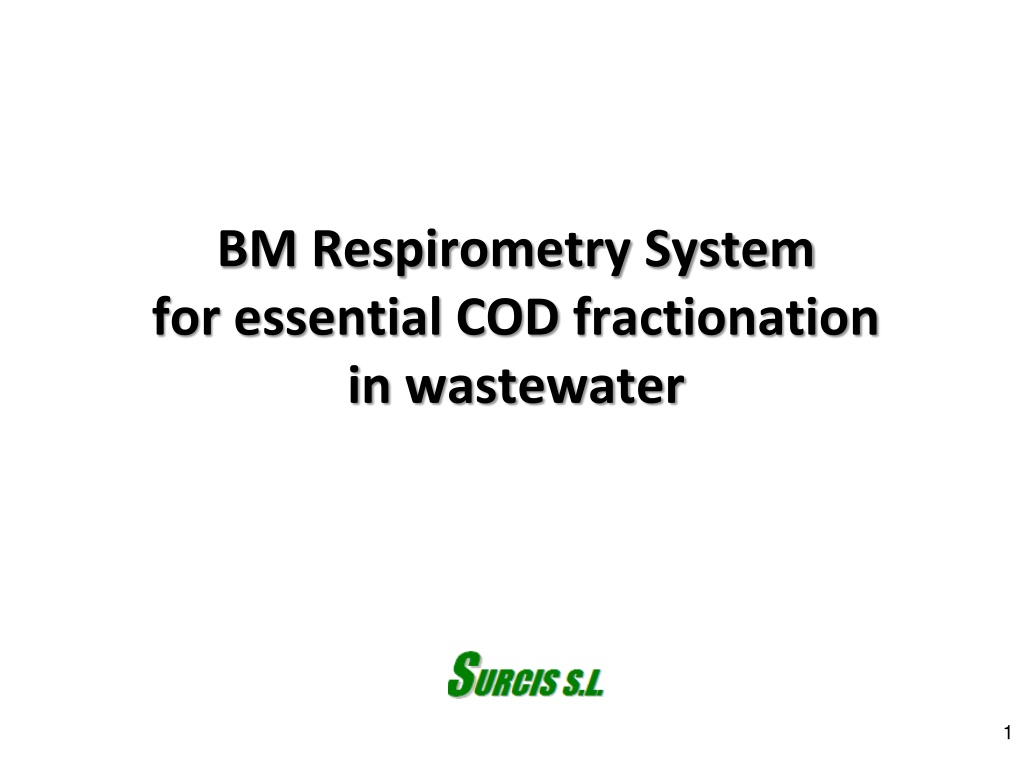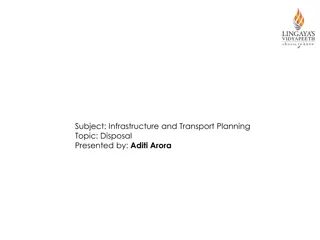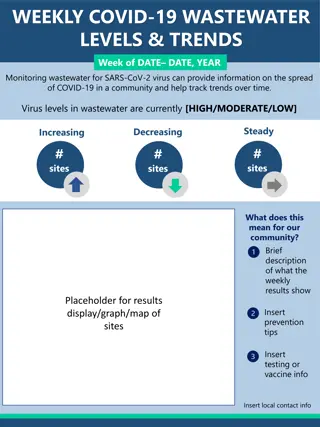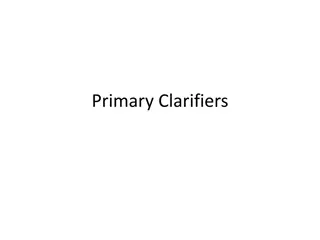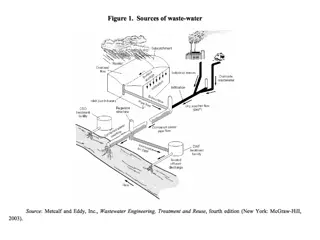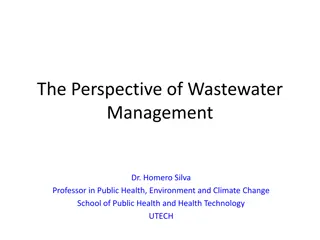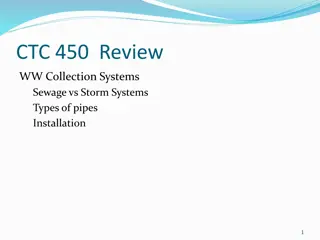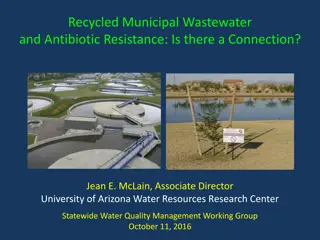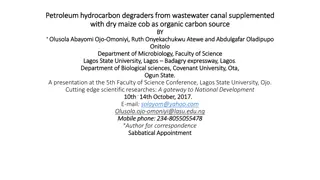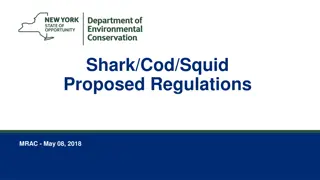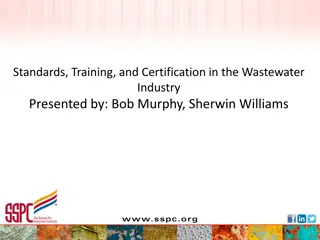Advanced Respirometry System for Wastewater COD Fractionation
Discover the BM Respirometry System offering three operation modes for essential COD fractionation in wastewater analysis. Learn about the main automatic parameters such as Oxygen Uptake Rate, Specific OUR, and Dynamic Respiration Rate. Explore essential COD fractions and their impact on wastewater treatment efficiency, including biodegradable and non-biodegradable fractions. Gain insights into optimizing wastewater treatment processes with detailed measurements and analysis provided by the BM Respirometry System.
Download Presentation

Please find below an Image/Link to download the presentation.
The content on the website is provided AS IS for your information and personal use only. It may not be sold, licensed, or shared on other websites without obtaining consent from the author. Download presentation by click this link. If you encounter any issues during the download, it is possible that the publisher has removed the file from their server.
E N D
Presentation Transcript
BM Respirometry System for essential COD fractionation in wastewater 1 1
Three different operation modes While most of the respirometers on the market offer only one operation mode, the BM respirometers have three different operation modes: OUR mode, Cyclic OUR mode, and R mode. Each mode develops different respirograms for automatic parameters including D.O., Temperature, and pH (in BM-Advance) from where specific applications can be made. In a single batch reactor, the measuring system can work as LSS and LFS batch respirometry. The system is optimized by a one-sense membrane device, that together with a dividing plate, is able to isolate the measuring chamber and avoid bubbles against the DO sensor. OUR Cyclic OUR R This mode is making use of the LSS respirometry type. The OUR mode consists of a single test to measure the OUR and/or SOUR parameters (by manually setting the MLVSS concentration). It also has the option the get a partial SOUR for any period within the respirogram. The cyclic OUR mode consists of a progressive sequence of OUR measurements, generated from the DO trajectory fluctuates between the DO. Low and DO. High set-points that were set at the start of the test. The R mode corresponds to a modified LFS respirometry measuring system can be considered as a completely mixed batch reactor. In this mode, we get the important advantage to work with a small volume of samples in order to minimize the test time for an important package of several simultaneous measurement. type test. The when it parameters 4
Main automatic parameters in BM respirometer for the different operations modes OUR: Oxygen Uptake Rate (mg O2/l.h) It measures the oxygen uptake rate for only one measurement or serial o measurements. SOUR: Specific OUR (mg O2/g VSS.h) Specific OUR related to MLVSS. OUR & Cyclic OUR BM Operation modes SOUR = OUR / MLVSS Rs: Dynamic Respiration Rate (mg O2/l.h) It measures the oxygen uptake rate from the mixture of the activated sludge and certain amount of wastewater sample or compound within a continuous chain of measurements. Rsp: Dynamic specific respiration Rate (mg O2/g VSS.h) Specific Rs referred to MLVSS. bCOD: Biodegradable COD (mg O2/l) Biodegradable or soluble readily biodegradable COD fraction, based on Rs measurements integration from a mixture of activated sludge and biodegradable sample. U: COD removal rate (mg COD/l,h) Speed at which the COD is being removed. q: Specific COD removal rate (mg COD/ mg VSS.d) Specific U referred to MLVSS concentration. Rsp = Rs / MLVSS R 5
Wastewater Biodegradable and non-biodegradable COD fractions COD fractions in the influent wastewater composition has a significant impact on the wastewater treatment operation and performance. sbCOD (XS) slowly biodegradable COD bCOD sbCOD = bCOD rbCOD biodegradable COD rbCOD (SS) COD readily biodegradable COD Total COD nbCOD non-biodegradable COD nbCOD = COD bCOD 7
II. Wastewater biodegradable and non-biodegradable fractions Note: Non-biodegradable COD = Unbiodegradble COD = Inert COD = Refractory COD 8
Why biodegradable COD rather than BOD ? BOD only measures the organics used for respiration and ignores what is converted to bacterial biomass BOD Ignores the unbiodegradable carbonaceous matter 9
I. Yield coefficient of heterotrophic biomass The YH is a fundamental parameter bt itself and for the bCOD and rbCOD fractions because it represents the part (percentage) of biodegradable COD that goes to the heterotrophic biomass growing bCOD = CO / (1 YH) 10
Wastewater COD biodegradable fractions by BM Respirometery From endogenous activated sludge and wastewater sample (non-filtered and soluble), the BM respirometer can automatically determine the biodegradable COD (bCOD) and readily biodegradable COD (rbCOD) The automatic calculation is performed in base of the mathematical formula based on the Consumed Oxygen (CO) and Yield Coefficient (YH) From bCOD, rbCODs, total COD (COD) and soluble COD (sCOD), the main COD fractions can then be calculated. Influent to biological reactor non-filtered sample R test in BM respirometer bCOD= CO / (1 YH) (automatic calculation) bCOD Activated sludge under endogenous respiration rbCOD SS R test in BM respirometer rbCOD = COs / (1 YH) (automatic calculation) Influente to biological reactor soluble sample Note: in case there is nitrification in the actual process, a dose of allyl-thiourea (ATU) must be added to the endogenous sludge before the test performance (normally 3 mg ATU per g of MLVSS) 11
Essential COD fractions by BM Respirometry bCOD & rbCOD BM Respirometry R tests bCOD not filtered sample rbCOD truly soluble sample bCOD and rbCOD respirograms in BM Respirometry rbCOD (SS) readily biodegradable COD bCOD biodegradable COD sbCOD (XS) slowly biodegradable COD COD Total COD nbCOD non-biodegradable COD sbCOD = bCOD rbCOD nbCOD = bCOD rbCOD 12
Influence of COD fractions in the biological wastewater treatment 13
Influence of readily biodegradable COD (rbCOD) High rbCOD within a high F/M, can lead the process towards a Bulking & Fomaing. When the aeration tank is operating under limited oxygenation, a rbCOD with high COD uptake rate can provoke a dramatic fall of the dissolved oxygen level to zero ppm, creating an important anoxic zone in the process start and a possible septicity effect. High rbCOD for a limited hidraulic retention time can develop a partial nitrification and risk of nitrite in the effluent. The rbCOD, in the influent of the anoxic zone, is the carbonaceous material available for the facultative heterotrophic biomass to develop the denitrification process. For this reason, a lack of rbCOD will lead the process to a poor denitrification performance Denitrification rate (NUR) is directly proportional to rbCOD uptake rate during nitrate oxydation. For this reason, the denitrification rate is proportional to the rbCOD uptake rate (U) Very low or very high rbCOD value can disable the advisable ratio of C/N/P = 100/5/1 for nutrients. The respirometry bCOD test can detect the presence of any inhibior or toxic compound. The bCOD is an essential parameter to be included in the actual oxygen requirement (AOR) and, with this, determine the corresponding AOR/SOR ratio in order to obtain a real evaluation of the aeration system and energy optimization. 14
Impact of high rbCOD When rbCOD is much higher than normal (>> 30%) together with a high F/M, it can generate an important bulking-foaming fenomena F/M: Food/Microorganisms ratio (BOD/SS.d) SRT: Sludge Retention Time (d) F/M (rbCOD): F/M only related to rbCOD White foam 15
Impact of high rbCOD uptake rate (U) in the dissolved oxygen F/M respirometer = 0,03 Simultaneous DO and U Respirograms in BM respirometer in R test for rbCOD determination rbCOD with high substrate uptake rate rate (U) can conduct the dissolved oxygen to zero value at the start of the aerobic treatment process . This effect, coming from the lack of oxygen, could create an unwanted anoxic zone which could leads the process towards a poor COD performance and possible septicity. 16
Impact of high rbCOD in the nitrification For a process operation under limited DO, a high percentage of rbCOD in COD (> 30% of COD) delays the actual nitrification rate starts, making an important impact in the available nitrification time and conducting it to a possible partial nitrification. 17
The rule of rbCOD in the denitrification The rbCOD, in the influent of the anoxic zone, should macth the soluble carbonaceous needs of the facultative heterotrophic biomass for the denitrification process. Soluble carbonaceous matter / Nitrate = [ rbCOD (1 0.85 YH.O2) ] / [ N_NO3d ] = 2,86 N_NO3d (mg/l): Nitrate to denitrify The Soluble carbonaceous matter / Nitrate should be equal or higher than 2,86 value. When the carbonaceous matter / Nitrate ratio is lower than 2,86, the denitrification performance will be proportionally reduced. 18
rbCOD utilization rate (U) in denitrification rate (NUR) Denitrification develops the same speed as the rbCOD uptake rate during nitrate oxydation. For this reason, the denitrification rate (NUR) is proportional to the rbCOD uptake rate (U) which is one of the simultaneous parameters that a BM respirometer can automatically calculate in the R test for rbCOD. Simultaneous Rs and U Respirograms R test for bCOD determination in a BM respirometer Denitrification rate : NUR = U (1 0.85 YH.O2) / 2,86 So, we can calculate the NUR from the U parameter, and check the necessary hydraulic retention time (TDN) in the anoxic zone. TDN= N_NO3d / NUR 19
Influence of the slowly particulate biodegradable COD High value of sbCOD including very low specific COD uptake rate (e.g. FOG) can provoke a nutritional lack, leading the process to a filamentous bacteria generation and possible bulking fenomena. BOD BOD / N / P COD sbCOD When the HRT is very limeted, a high sbCOD could provoke a poor BOD performance. For wastewater treatments not designed for nitrification, under certain conditions, a high value of sbCOD could lead the process to an unwanted nitrification. 20
Impact of high slowly biodegradable COD (sbCOD) and low specific substrate uptake rate (q) When sbCOD is very high ( >> 70 % of COD) , together with a low specific substrate uptake rate (q), it can make a high impact in the activated sludge and lead the process to an important foaming & bulking state. : q respiromgram for a typical example of high sbCOD Simultaneous respirograms of q and Rs for bCOD determination in a BM respirometer On those conditions, the biomass can experiment a dramatic nutritional lack, leading the sludge to an important defloculation and very poor performance. 21
Influence of the non-biodegradable COD High percentage of nbCOD (>> 25% of COD) can lead the process to a poor performance by getting COD levels out of limits in the effluent. When the nbCOD includes a high percentage of particulate portion (nbpCOD), the sludge production can be dramatically increased. When the nbCOD includes a high percentage of soluble portion (nbsCOD) it could be a possible lack of soluble biodegradable COD (rbCOD) for the denitrification. 22
Toxicity detection during a bCOD test The dCOD test can detect the presence of any inhibitor or toxic compound when the trajectory of the positive respiration rate (+ Rs) crosses the baseline, corresponding to the endogeneous respiration level) passing into a chain of negative values (- Rs) within a progressive negative slope. Negative Rs values under negative slope means a significative active biomass concentration reduction. In that condition, the bCOD value becomes lower than normal due to loss of oxygen demand (area below baseline) 23
Essential parameters for evaluating a diffused aeration system Biodegradable COD (mg/L) - Automatically determined by BM respirometry - bCOD Influent flow rate (m3/d), NTK to be removed (mg N/L), Nitrate to be removed (mg NO3-N/L) Process data Actual oxygen requirement (kg O2/d) = Q*bCOD (1-YH)/1000 + 4.57*Q*TKN/1000 2.28*Q*NO3-N AOR Oxygen flow rate supplied by the aeration system (kg O2/d) = 6.84 * Qair (Nm3/h) QO2 Standard oxygen transfer efficiency (%) - calculated from the curve provided by the manufacturer. Normally SOTE 6,5 * Diffusers depth (m) SOTE Standard oxygen requirement (kg O2/d) = QO2 * SOTE SOR Oxygen transfer efficiency in the process (%) = 100 * AOR / QO2 OTEf Ratio for evaluation and follow up AOR/SOR reference for clean fine bubble systems = 0.33 AOR/SOR reference for clean coarse bubble systems = 0.5 AOR/SOR 24
SURCIS, S.L. www.surcis.com 25
